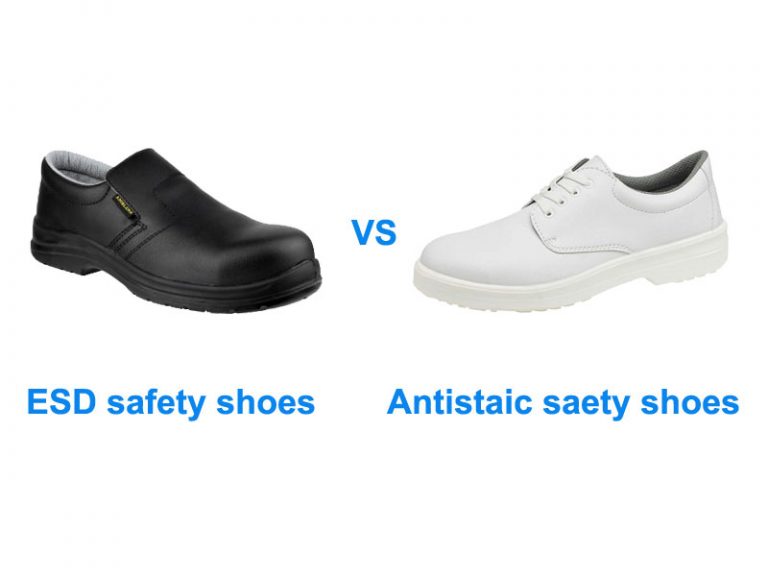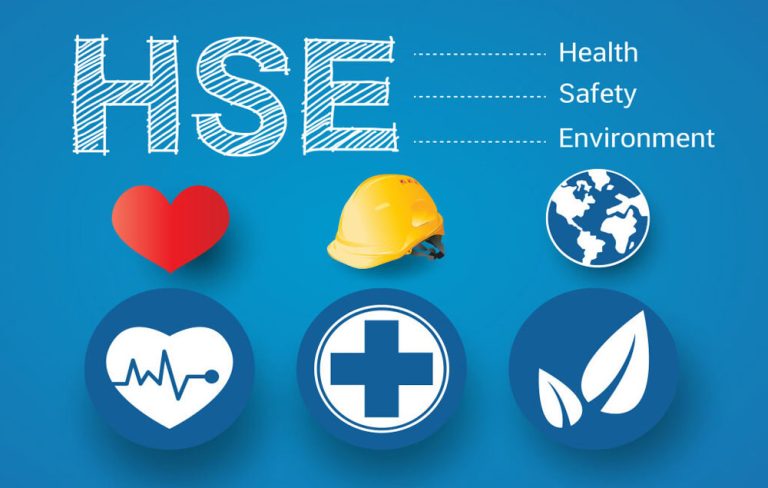If you are looking for safety shoes to help you prevent ESD (Electro-Static Discharges) while working, it may get confusing at times. Shoe stores may advise you something that is Static Dissipative (SD), but completely different from the anti static shoes or ESD work shoes.
So before buying any of them, make sure to read our post so that you know what is the difference between ESD safety boots and anti static safety shoes. It will help you get an insight about different types of safety boots and protect yourself from getting shocked by electricity which may affect your health as well.
Table of Contents
What is ESD safety shoes meaning?
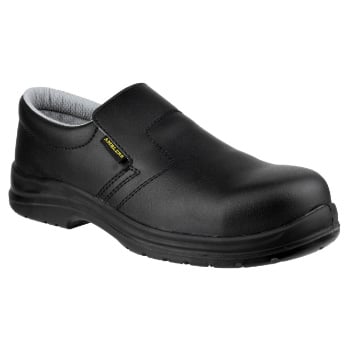
ESD stands for Electrical Static Discharge. It is a potential which can cause damage to electronic components, if not protected against properly. ESD safety footwear are specially designed to protect the user from this potential and keep their electronic devices safe.
ESD safety shoes are made of material which does not conduct any electricity, such as rubber or plastic. They have electrical resistors attached inside them, which absorb the static charge from our body and discharge it into the ground through a grounding wire. This way, we don’t have to worry about damaging our valuable equipment while working on it.
What is anti static safety shoes?
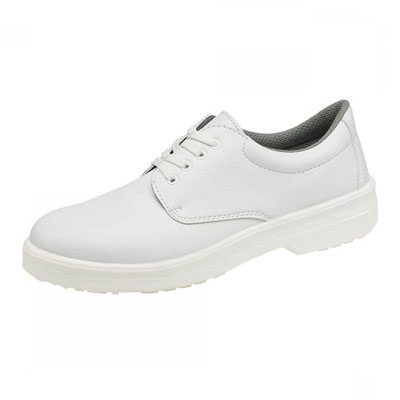
Anti-static shoes are made of a special material that does not generate static electricity. These shoes are designed for people in industries where the risk of electrostatic discharge (ESD) damage is high. For example, people who work in computer or electronic industries wear anti-static shoes to prevent damage from ESD.
Antistatic safety footwear is mainly composed of two parts, the upper and the sole. The upper part is made of anti-static materials such as polyurethane, PU leather, and other materials. The sole is made of anti-static rubber material (usual rubber) with high friction coefficient to prevent slipping on wet surfaces.
Why ESD and anti-static safety shoes is important?
ESD, or Electrostatic Discharge, is a common problem in many work environments. The risk of ESD is present everywhere from hospitals to manufacturing plants, and it’s important to take precautions to avoid getting shocked.
ESD shoes are designed to help protect against shocks that result from contact with ESD-sensitive components. These shoes are made with materials that resist the flow of electricity and prevent the build-up of static electricity in your body.
The main benefit of anti-static safety shoes is that they reduce the risk of electrostatic discharge (ESD). When you wear these types of shoes while working on electronic equipment or handling electronic parts, they can prevent unwanted sparks from occurring during normal operations.
ESD shoes also offer additional protection against electrical shock by insulating your feet from the ground when you’re working on sensitive equipment like computers and medical devices. This prevents any electrical charge in your body from being conducted down through your feet into the ground or other sources of electricity.
Antistatic safety shoes vs ESD safety shoes
If you’re looking for a pair of safety footwear, you may have come across the terms “antistatic” and “ESD.” This can be confusing, especially if you don’t work with static electricity. Both types of safety shoes are equally effective at protecting you from static shock and ESD, but they serve different purposes.
ESD stands for Electrostatic Discharge which is a phenomenon that occurs when a human body is charged with static electricity. This may occur when there is contact with certain materials such as plastics, glass, metals, etc. In order to protect yourself from such a situation, you need an ESD safety shoes that will protect you from any kind of electric discharge.
Antistatic safety footwear is designed to keep your feet safe from shocks and damage caused by static electricity. The shoes are usually made from a conductive synthetic leather or fabric upper with a metal sole plate and rubber sole. The metal sole plate is often made from stainless steel or aluminum — both of which are highly conductive metals.
Standards for ESD safety shoes and anti-static safety shoes
The standard for ESD safety shoes and antistatic safety boots is EN ISO 20347:2021. This document was published in 2017 to replace EN 61340-5-1. It specifies requirements for the design, manufacture, and performance of anti-static footwear for protection against electrostatic discharges (ESD). It also specifies requirements for their use in protecting persons from the hazards caused by static electricity.
The standard covers:
Protective footwear with a resistance of at least 1MΩ when tested in accordance with IEC 60296*;
Anti-static insoles with a resistance of at least 5MΩ when tested in accordance with IEC 60296*.
The other country’s common standards for ESD safety shoes are:
1. The standard of China GB/T 2844-2008;
2. The standard of Japan JIS Z 2801-2007;
3. The standard of America ANSI/ESD S20.20-2007 (R2012);
4. The common security standards of ESD shoe, ANSI/ESD S3.10-2012 (R2014);
How to test the anti-static and ESD function of shoes?
There are two ways to test the anti-static and ESD function of shoes:
1. Put your shoes on the table, and then touch them with an anti-static pen or other conductive materials; if the shoes can be easily attracted by the pen or other conductive materials, then it means that your shoes have good anti-static performance.
2. Place your hand on an ESD electrode stand and then touch it with one foot; if you feel any shock or numbness on your hand after touching the electrode stand, then it means that there is no problem with your shoes’ anti-static performance.
How to choose anti static safety shoes and ESD safety shoes?
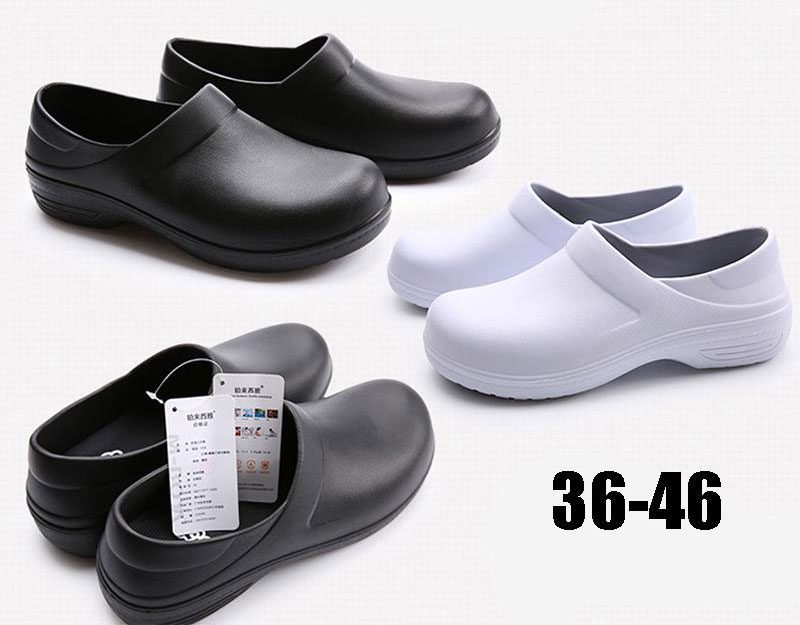
Anti-static safety shoes and ESD safety shoes are the most important parts of ESD protective clothing. They are always worn and used together with the other parts of ESD protective clothing to provide complete protection from static electricity. The following is a brief introduction on how to choose anti-static safety shoes and ESD safety shoes.
1. Choose a high-quality antistatic fabric with good electrical conductivity, excellent strength and abrasion resistance, and good permeability.
2. Choose rubber soles with good slip resistance, wear resistance, cold resistance, oil resistance, etc., in order to prevent static electricity from being generated during walking or standing on the floor.
3. Choose high-quality rubber soles with good anti-slip properties and abrasion resistance to ensure that they can stand on slippery floors without slipping or sliding away from the ground surface so as to ensure a safe work environment for operators during work.
4. Choose elastic insoles made of high-quality material such as latex foam or polyurethane foam with good shock absorption performance so as to reduce fatigue caused by long time standing or walking; supplemented by insoles.
Where to buy anti static safety shoes or ESD safety shoes?
The best place to buy anti-static safety shoes or ESD safety shoes is from your local supplier. If you are looking for a specific type of anti-static safety shoe, then your local supplier is the best place to start. You can also find them on the internet, but it is always better to get advice from someone who knows what they are talking about.
You can find a wide range of anti-static shoes on Amazon. Some of the best ones are from ESD Safety Solutions, and they come in various styles and colors.
If you’re looking for something basic, there’s the Black ESD Anti-Static Clog Safety Shoe that comes in black or white. If you want something a little more special, there are also Red and Blue ESD Anti-Static Clog Safety Shoes available as well.
You can also get different sizes of clogs to make sure they fit properly. The shoe sizing ranges from 5 to 13, which will fit most people’s feet comfortably.
Remember that these aren’t just for people who work with electronics all day long; they’re also great if you have pets that shed a lot or if you have kids who are always touching everything in sight!
Conclusion
So, what is your next move? Do you need safety footwear for your ESD protection? Or do you need safety shoes that protect from aspects such as static hazards, slippery surfaces, and puncture resistance?
In conclusion, they are both safety shoes and they have their own pros and cons. For any safety shoes, the key point is not only the protection level but also how long it can protect you from harm. So if you choose an ESD safety shoe properly, it can help you avoid the danger brought to your health or even your life.

